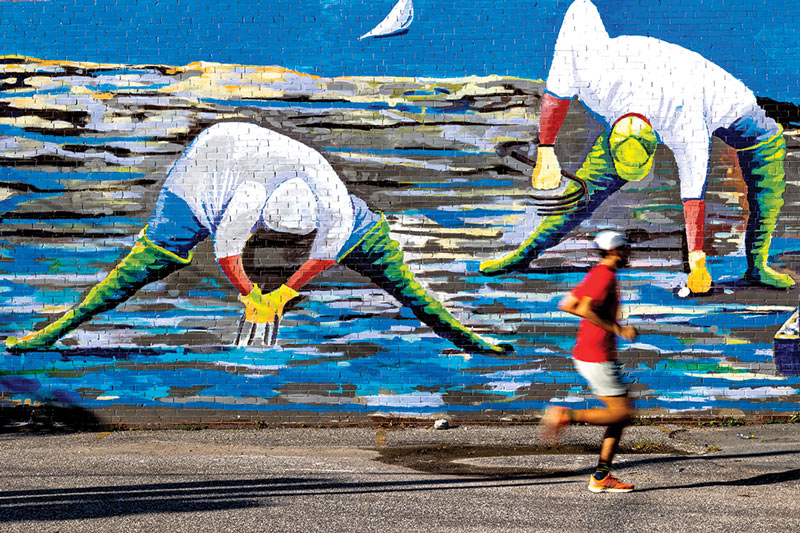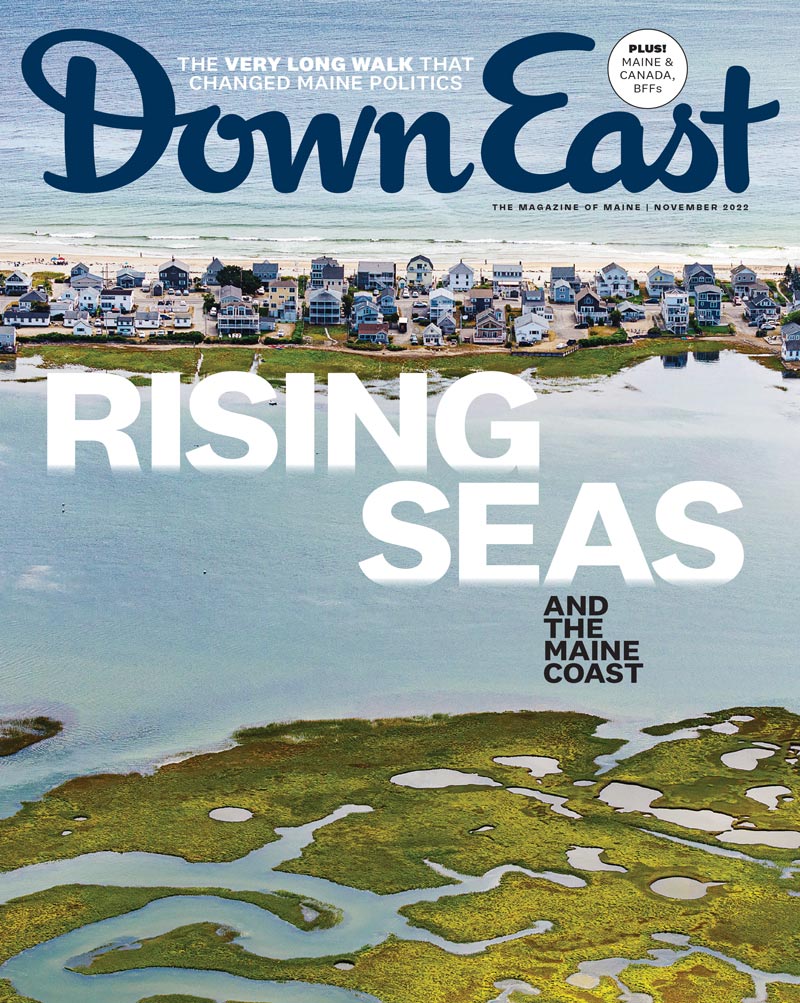By David Howard
Photographed by Ryan David Brown
From our November 2022 issue
Around 8:30 one morning, Danny Mejia popped out of his car near the intersection of Woodlawn Avenue and Morrill Street, in Portland’s North Deering neighborhood, dressed in a red T-shirt, gray shorts, and a Patagonia cap, ready for a run. Mejia is a 27-year-old endurance athlete whose accomplishments include the fastest unsupported traverse of Maine’s 100-Mile Wilderness — 33 hours, 18 minutes, 55 seconds. This year, he embarked on a different kind of quest, to run every single Portland street. There are some 1,500 of them, by his count, adding up to about 400 miles.
We huddled over his phone to study the day’s route, using a website created by his college friend and fellow East End resident Tucker Gordon, a data scientist. After Mejia uploads a GPS-tracked run, custom software posts it online, superimposing a purple line over a city map. As we headed down Morrill, a cul-de-sac of single-family homes, he explained there would be some looping around and doubling back. “It’s not a perfect practice,” he said. Backtracking was all but inevitable among these streets, tucked inside the V formed by Allen and Washington avenues. Many of the roads fizzle out in dead ends — the streetscape of an urban planner with apparent commitment issues.

A few minutes in, Mejia paused to scrutinize what might have been a dirt road branching off Morrill. “Let me see if this is a street,” he said. It turned out to be a driveway. He kept the pace slow enough for conversation, but he hasn’t been zigzagging through Portland for land-speed records anyway. A Minnesota native, he conceived of the project to gain a deeper appreciation for his adopted city and its many moods, settings, and rhythms. “There are some days I want to see everything I can see and hear everything I can hear and just soak it all in,” he said, adding that, other days, he just wants to run a grid of streets and let his mind drift. “Most of the time, I’m feeling much more connected to people and the community after one of these runs.”
Twenty minutes in, he stopped at an intersection, checked his phone, and headed down dead-end Harvard Street before cutting along a footpath to Yale Street. A guy standing in his driveway gave a tentative wave. Mejia has heard the city’s music, caught scents of its cookouts, seen its muted lamplight on frigid winter evenings. He also gets some curious looks on streets that don’t see much traffic, on foot or otherwise. “At times,” he said, “I wish I was wearing a shirt that says, ‘I’m doing this thing, and that’s why I’m running down your dead end.’”



Mejia is the program director at the Maine Boys to Men Project, a nonprofit focused on reducing gender-based violence. He usually runs after work, to decompress. When he started knocking out Portland streets, in January, he wore a headlamp and dealt with ice and slush. He finished the 100-Mile Wilderness on a blown knee, though, so adverse conditions don’t discourage him.
From Forest Avenue, Mejia checked off the tiny triangle formed by Goodridge and Eleanor streets, by Lovely Nails & Spa and a Subway. Circling back, we passed Psychic Connection — $10 for a reading. Mejia was reminded of a previous nearby run, when he phoned ahead for a shrimp po’ boy from Po’ Boys & Pickles. Another time, he worked in stops for a pizza slice at Monte’s Fine Foods, on Washington Avenue, and ice cream at Dear Dairy, on Presumpscot Street. I suggested he could sell tickets for the experience. “Right? Guided runs through the streets,” he laughed. “I’m not going to commercialize this, I’ll tell you that.”

Mejia said he expects to finish every street by year’s end, and as Forest Avenue traffic trundled by, he noted one of the quest’s unexpected benefits: it’s far more interesting than the usual monotonous training runs. “You just feel like Pac-Man: ‘I can’t go home until I hit this half a street! I’m not gonna leave just this little piece of street here!’” he says. “So then, before I notice, I’m like, ‘Oh, I’ve been running for an hour.’”




